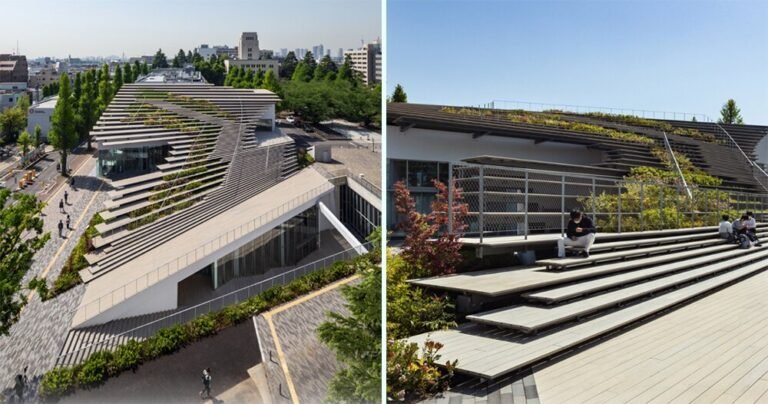TOP 10 reader submissions of 2022 — installations
looking back at 2022’s top 10 installations by our readers
As we continue our review of 2022’s biggest design stories, we take a look at some of the most exciting installations created by our readers. Over the past year, artists, designers, and architects alike have used the power of their mediums to present innovative and immersive ways of capturing their audiences attentions, both spatially and conceptually. Most notably, we saw many designers testing the boundaries of nature to create not only thought-provoking sculptural pieces, but also environmentally-conscious functional devices dedicated to preserving our ecosystems.
From a site-specific installation transforming a tree trunk into a primitive concert space, to a living plant robot wielding a machete, to a stool made of fungi that bloom into flower-like mushrooms — we highlight our TOP 10 installations from our reader submissions of 2022.
LIVING PLANT CONTROLS A MACHETE THROUGH AN INDUSTRIAL ROBOT ARM
video © David Bowen
David Bowen’s installation, ‘Plant Machete,’ enables a living plant to move a machete through an industrial robot‘s bionic-like arm. The installation implements a control system that measures electrical noises found in the living philodendron. This system uses an open source micro-controller connected to the plant, which reads varying resistance signals across the its leaves.
The machine’s movements are accomplished by using a custom technology that translates electrical signals from the plant into real-time motion. Embedded patch sensors pick up electric signals from the leaves and transmit them to the machine that contains several joints that determine how the machete swings, jabs, slices, and interacts in space.
read more here
UMA + ANTTI LAITINEN CONVERT TREE INTO PRIMITIVE CONCERT SPACE IN SWEDEN
video © UMA
Following the first part of their ‘One Tree Four Seasons’ series, Ulf Mejergren Architects (UMA) and Finnish artist Antti Laitinen unveil ‘Season II’ of their collaborative work. As mentioned in designboom’s previous coverage, the duo is working on a specific tree to create four different projects, one for each season, using the available material found in nature. ‘Some of the materials that nature has to offer can only be found at certain periods over the year, which turns each project into a reflection of that particular time,’ explains UMA.
read more here
MONSIEUR PLANT CONTORTS FANTASTICAL TREE TRUNK SCULPTURES TO EXPLORE THE POWERS OF NATURE

image © Monsieur Plant
Botanical artist Christophe Guinet, better known as Monsieur Plant, presents his latest project ‘TWIST’ which highlights a series of delicately contorted tree trunk sculptures echoing the emotions of nature through their distinct forms. The series introduces five unique installation pieces that ‘come straight out of a fantastic and magical universe’, modeled in unusual configurations to question the transformative powers and limitations of nature.
read more here
FUNGI GROW AND BLOOM LIKE FLOWERS IN SATOSHI ITASAKA’S MUSHROOM STOOL
In an effort to learn more about natural decomposers such as fungi and bacteria, Japanese designer Satoshi Itasaka unveils the ‘Fungi Stool’. As its title suggests, the stainless steel and wood stool is composed of fungi that grow and bloom, like flowers, into mushrooms.
‘It is no exaggeration to say that the cycles of nature are carried out by bacteria and fungi,’ Itasaka notes. ‘Bacteria and fungi have been the decomposers in the food chain keeping the earth’s environment in a healthy state. They are the ones we should follow for we are constantly putting a burden on the earth in terms of the global environment.’
read more here
‘INXECT SUIT’ CARRIES PLASTIC-EATING MEALWORM COLONIES, SHELTERED BY HUMAN BODY HEAT

image © Pavels Liepins
Pavels Liepins designs ‘Inxect Suit’ — a low-carbon, wearable plastic waste management and protein harvesting system powered by mealworms and human emissions. Addressing key future concerns over both food insecurity and plastic pollution, the mobile regenerative device creates a symbiotic relationship between the human body and the mealworm colony. The suit integrates a habitat of mealworms sheltered by a terrarium and human body heat released from movement, employing the insect to safely consume and digest toxic plastic waste. The project further proposes the protein-dense insects as a low-energy and nutritious alternative of meat for human consumption.
read more here





